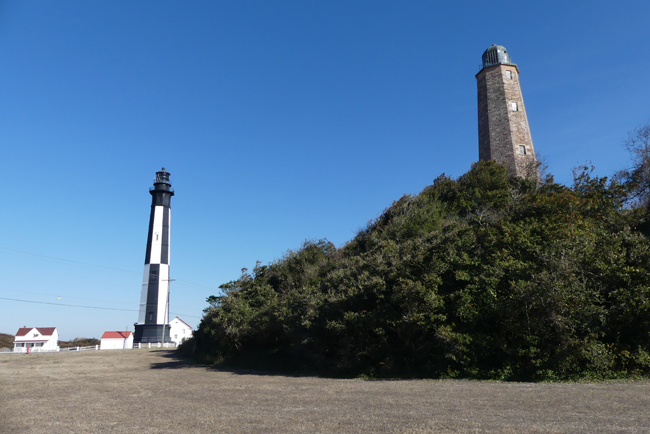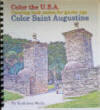Cape Henry
Lighthouse's Unique Keeper

Cape Henry Lighthouse, the 4th oldest lighthouse in the United
States, was authorized by President George Washington in 1792.
In 1881, the government constructed a second lighthouse 350
feet from the first. You can visit but need to be cleared by
MPs first as they are on an active military base. A passport or
driver's license works.

You can climb to the
top of the
oldest lighthouse
but it's a stiff
climb. The
lighthouse was built
on a dune, so you
first climb a long
flight of stairs to
the top of the dune.
Then, it's 191 steps
on the steep spiral
staircase to the top
of the lighthouse.
Both lighthouses are
on the National
Register of Historic
Places.

The lighthouses are
a fun place to visit
but there is
something more in
their story.
Lighthouses are
beacons of hope, and
Cape Henry
Lighthouse offers a
story of one man's
hopes. From May 10
to July 26, 1870.
Willis Augustus
Hodges served as
the first African
American lighthouse
keeper at the Cape
Henry Lighthouse.
Hodges has an
interesting
background that
shows anyone
determined enough
can overcome
barriers. He was
born free in what is
now Virginia Beach
because his mother
was the daughter of
a white woman and a
black man. Hodges'
father had earned
his freedom by
working beyond his
regular duties on a
farm.

Being a prospering
free family didn't
make life easy for
Black people then.
They faced harsh
persecution in the
south, especially
after the Nat Turner
Rebellion in 1831.
His family moved
back and forth
between Virginia and
New York during his
youth.
Despite strong
anti-education laws
preventing Black
people from learning
to read or write,
Hodges received a
few months of
schooling and taught
himself to read and
write. As an adult,
he was nicknamed
“Specs,” for his
large, metal-framed
glasses. He was a
strong believer in
education and set up
a free school for
black children. He
advocated for
abolition, voting
rights, integration
of schools and
property rights. He
even founded his own
town, Blacksville,
in New York and used
his home there as a
stop on the
Underground
Railroad. He became
an ordained minister
and ran for office.
As part of his
campaigning and
educational push, he
created his own
newspaper, The Ram’s
Horn. During the
Civil War, he spied
for the Union.
In spite of the
harsh treatment, he
had received in
Virginia, he loved
his native state and
after the war he
returned there.
During
reconstruction, he
represented Princess
Anne County in
Richmond at the
Virginia
Constitutional
Convention.
An optimist to the
end, he wrote this
at end of his 1878
autobiography: “We
may not live to view
the promised land of
freedom and justice;
we may die in the
wilderness of
slavery and
injustice, just like
the older heads of
our children of
Israel, but our
children or
children’s children
will possess the
land, if God is God
and a just God.”
He died at 75 years
old on September 24,
1890 and is buried
in New York.































